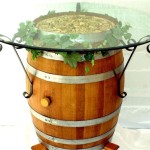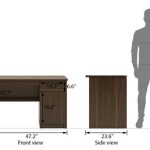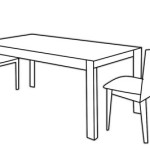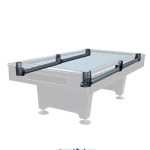The Enduring Appeal of the Vintage Kitchen Island Table
The kitchen island table, a hybrid of functionality and aesthetics, occupies a prominent position in modern and vintage kitchen designs. Beyond its practical uses as a food preparation surface, storage unit, and social gathering point, the vintage kitchen island table boasts a unique charm and character that evokes a sense of nostalgia and timelessness. This article examines the defining characteristics of vintage kitchen island tables, their historical context, design elements, and the reasons for their continued popularity in contemporary homes.
The concept of the kitchen island itself evolved gradually. In earlier eras, kitchens were primarily utilitarian spaces, often separated from the main living areas. As homes became more integrated, the kitchen began to transform into a central hub for family life and social interaction. This shift paved the way for the introduction of the kitchen island, which initially served as a simple work table or butcher block but evolved into a more multi-functional and stylish piece of furniture. The vintage kitchen island table reflects this transitional period, embodying a blend of practicality and emerging design sensibilities.
Distinctive Features of Vintage Kitchen Island Tables
Vintage kitchen island tables are often distinguished by several key features that set them apart from their modern counterparts. These features reflect the design trends and manufacturing techniques prevalent in the eras from which they originate, typically ranging from the early to mid-20th century.
Material Composition: A defining characteristic is the use of solid wood. Vintage kitchen islands were typically constructed from durable hardwoods like oak, maple, or pine. These materials provided structural integrity and could withstand the rigors of daily use in a busy kitchen. Solid wood also contributed to the furniture's longevity, allowing it to age gracefully and develop a unique patina over time. The presence of natural wood grain and imperfections adds to the character and authenticity of these pieces.
Design Aesthetics: The design aesthetic of vintage kitchen island tables often incorporates simple, functional lines with subtle decorative details. Common design elements include turned legs, beadboard panels, recessed doors, and simple hardware. The overall aesthetic tends to be less ornate than earlier Victorian styles but more detailed than the minimalist designs of contemporary islands. Painted finishes, often in muted or pastel colors, were also prevalent, adding a touch of personality and charm. The use of contrasting colors for the base and the tabletop was a common design choice, further enhancing the visual appeal.
Construction Techniques: Vintage kitchen island tables were typically constructed using traditional joinery techniques, such as mortise and tenon joints, dovetail joints, and tongue-and-groove construction. These techniques ensured the stability and durability of the furniture, allowing it to withstand the test of time. The attention to detail in the construction process is evident in the seamless joints, the smooth surfaces, and the overall sturdiness of the piece. Hand-crafted elements, such as hand-turned legs or hand-carved details, were also common, adding a unique touch of artistry to the furniture.
Hardware Details: The hardware used on vintage kitchen island tables is another distinguishing feature. Common hardware elements include porcelain knobs, cast iron pulls, and simple hinges. These hardware pieces were typically made from durable materials and designed to complement the overall aesthetic of the furniture. The hardware often displays signs of wear and tear, adding to the vintage charm of the piece. Replacing the hardware with reproduction pieces can enhance the authenticity of the island while updating its functionality.
Size and Configuration: Vintage kitchen island tables came in a variety of sizes and configurations, ranging from small, portable work tables to larger, more elaborate islands with built-in storage. The size and configuration of the island were typically determined by the size of the kitchen and the needs of the homeowner. Smaller islands were often used in kitchens with limited space, while larger islands provided ample work surface and storage in larger kitchens. The configuration of the island could also vary, with some islands featuring open shelves, drawers, or cabinets.
Historical Context and Evolution of Kitchen Islands
Understanding the historical context provides insight into the design and function of vintage kitchen island tables. The evolution of these pieces reflects broader societal changes and technological advancements that influenced kitchen design. The kitchen itself underwent a significant transformation throughout the 20th century, evolving from a primarily utilitarian space to a more integrated and family-oriented area.
Early 20th Century: In the early 20th century, kitchens were often more functional than aesthetically pleasing. Kitchen islands, if present, were typically simple work tables or butcher blocks used for food preparation. These islands were often made of wood and had a simple, utilitarian design. The focus was on practicality and durability rather than style. The presence of running water and built-in cabinetry was not yet widespread, so kitchen islands served as essential work surfaces.
Mid-20th Century: As kitchens became more integrated into the main living areas, the design of kitchen islands evolved to reflect this change. Kitchen islands became more stylish and functional, with features such as built-in storage, countertops, and seating areas. The use of color and decorative details also became more common. The mid-20th century saw the rise of suburban living and the emphasis on the kitchen as the heart of the home. Kitchen islands reflected this trend, becoming more elaborate and incorporating features designed for both food preparation and social interaction.
Post-War Era: The post-war era brought significant changes in kitchen design, with the introduction of new materials and technologies. Kitchen islands became more streamlined and modern, with features such as Formica countertops, metal hardware, and built-in appliances. The focus shifted towards efficiency and ease of use, with kitchen islands designed to streamline food preparation and cleanup. The advent of mass production techniques also made kitchen islands more affordable and accessible to a wider range of homeowners.
Influence of Design Movements: Various design movements, such as Art Deco, Mid-Century Modern, and Early American, influenced the design of vintage kitchen island tables. Art Deco designs often featured geometric shapes, bold colors, and luxurious materials. Mid-Century Modern designs emphasized clean lines, natural materials, and functional simplicity. Early American designs drew inspiration from traditional American folk art and craftsmanship, often incorporating rustic elements and hand-painted details. These design movements contributed to the diverse range of styles found in vintage kitchen island tables.
Reasons for the Continued Popularity of Vintage Kitchen Island Tables
Despite the abundance of modern kitchen island options, vintage kitchen island tables continue to hold considerable appeal for homeowners and interior designers. Several factors contribute to their enduring popularity, including their unique aesthetic qualities, their sustainable nature, and their ability to add character and personality to a kitchen space.
Aesthetic Appeal and Character: One of the primary reasons for the popularity of vintage kitchen island tables is their unique aesthetic appeal. These pieces possess a character and charm that is difficult to replicate with modern furniture. The use of solid wood, the presence of natural wood grain, and the subtle imperfections that come with age all contribute to the vintage aesthetic. The hand-crafted details and the historical context of these pieces add another layer of interest and appeal. Vintage kitchen island tables can serve as focal points in a kitchen, adding warmth, personality, and a sense of history to the space.
Sustainability and Reclaimed Materials: In an era of growing environmental awareness, the appeal of vintage furniture is also linked to its sustainable nature. Choosing a vintage kitchen island table is a way to reduce consumption and minimize the environmental impact associated with the production of new furniture. Reusing and repurposing vintage pieces helps to conserve natural resources and reduce waste. Many vintage kitchen island tables are made from reclaimed materials, further enhancing their sustainability. Using reclaimed wood gives these pieces a unique patina and adds to their historical significance.
Versatility and Adaptability: Vintage kitchen island tables are surprisingly versatile and adaptable to a variety of kitchen styles. They can be incorporated into traditional, cottage, farmhouse, and even modern kitchen designs. Their neutral colors and simple lines allow them to blend seamlessly with a wide range of decor. Vintage kitchen island tables can also be customized to suit specific needs and preferences. The addition of new countertops, hardware, or paint finishes can transform a vintage island into a unique and personalized piece. Their adaptability makes them a popular choice for homeowners who want to create a customized kitchen space with a touch of vintage charm.
Investment Value: While not the primary motivation for most buyers, vintage kitchen island tables can also hold investment value. Well-preserved and restored vintage pieces can appreciate in value over time, particularly those that are rare or have historical significance. Investing in a vintage kitchen island table can be a way to add a unique and valuable piece to a home. The value of a vintage island depends on several factors, including its age, condition, rarity, and provenance. Pieces that are in excellent condition and have a documented history are typically more valuable than those that are damaged or have been heavily modified.
Vintage kitchen island tables offer a compelling combination of functionality, aesthetics, and sustainability. Their enduring popularity reflects a growing appreciation for the craftsmanship, character, and history that these pieces embody. Whether used as a functional work surface, a social gathering point, or a decorative accent, the vintage kitchen island table remains a timeless and cherished element in kitchen design.

64 Vintage Wooden Kitchen Island Designs Digsdigs

How To Repurpose An Antique Table As A Kitchen Island Thrift Challenge Holland Avenue Home

Vintage Wood Kitchen Work Table

73 Kitchen Island Ideas To Elegantly Anchor The Heart Of Your Home Architectural Digest

Vintage French Wooden Kitchen Island Sons

Vintage Kitchen Island Worktop Mayfly

Heir And Space Kitchen Island Adventures

Vintage Wooden Kitchen Island Inside Bright Room With White Tiles On The Walls Cupboards And Design Decor Rustic

Vintage Farmhouse Kitchen Islands Antique Bakery Counter For House Of Hargrove

Pin By Angie Cantu On Kitchen Island Country Designs Rustic Cabinets Home Decor








